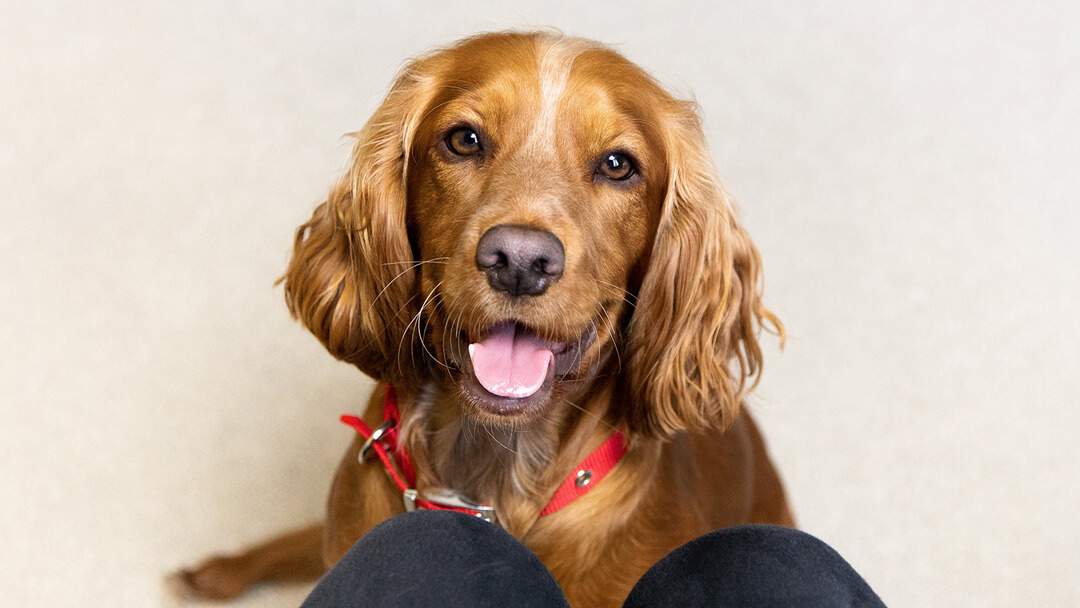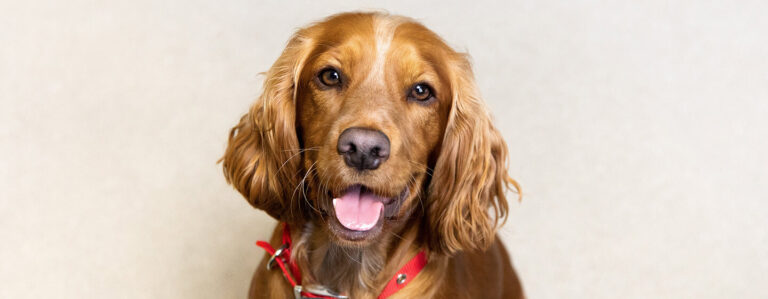Cutting a dog’s whiskers is bad because it can affect their spatial awareness and safety. Cutting a dog’s whiskers may seem harmless, but it can have adverse effects on their well-being.
Whiskers, also known as vibrissae, are specialized sensory hairs that play a crucial role in a dog’s perception of their surroundings. Dogs use their whiskers to sense nearby objects, feel out new spaces, and even communicate with other dogs. Whiskers provide them with vital information about the world around them, helping them navigate and avoid potential dangers.
So, removing or trimming a dog’s whiskers can disrupt their spatial awareness and compromise their safety. We will explore the harmful effects of cutting a dog’s whiskers and why it’s best to leave them intact.
The Purpose Of Dog Whiskers
It is not recommended to cut a dog’s whiskers as they play a crucial role in their spatial awareness and safety. Whiskers help dogs sense nearby objects, navigate through new spaces, and communicate with other dogs. Cutting them off can affect their ability to judge proximity, making them less confident.
Why Dogs Have Whiskers
Dog whiskers, scientifically known as vibrissae, serve an important purpose in a dog’s sensory system. These long, thick hairs are rooted deep in the dog’s face and are highly specialized sensory receptors. Whiskers are not just ordinary hairs; they are connected to nerve endings, making them extremely sensitive to even the slightest touch or movement.
Their primary function is to provide dogs with essential information about their environment. By detecting even the tiniest changes in air currents, dogs can gain an accurate understanding of their surroundings. Whiskers help dogs navigate through tight spaces, notify them of any potential danger that might be present, and assist them in hunting prey. It’s similar to humans using their fingers to feel the texture and shape of objects, but for dogs, their whiskers play a crucial role.
How Whiskers Benefit Dogs
Whiskers offer countless benefits to dogs, ensuring their safety, awareness, and overall well-being. These are some of the ways in which whiskers benefit dogs:
- Spatial Awareness: Whiskers provide dogs with an accurate perception of their surroundings. By detecting changes in air currents, narrow spaces, and potential obstacles, dogs can move confidently without colliding into objects or getting stuck.
- Social Communication: Dogs use their whiskers to communicate with other dogs. When interacting, dogs may use slight movements of their whiskers to signal their intentions, emotions, or assert dominance.
- Sensory Feedback: Whiskers help dogs determine the size, distance, and texture of objects without relying solely on their eyesight. This allows them to gather as much information as possible and make informed decisions in various situations.
- Balance and Coordination: Whiskers provide dogs with additional sensory input when moving or balancing. This helps them adjust their body position and maintain stability, especially in challenging terrains.
- Enhanced Hunting Abilities: Whiskers play a crucial role in a dog’s ability to hunt and catch prey. They help dogs locate and determine the precise position of potential targets, giving them a greater chance of success.
Given the vital role that whiskers play in a dog’s life, it is crucial to never remove or trim them. Cutting a dog’s whiskers can disrupt their sensory system, potentially leading to spatial disorientation and a heightened risk of accidents. Therefore, it is always advised to prioritize your dog’s well-being and leave their whiskers intact.

Credit: www.facebook.com
The Harmful Effects Of Cutting Dog Whiskers
Cutting a dog’s whiskers can have harmful effects on their spatial awareness and safety. Dogs use their whiskers to sense nearby objects and navigate new spaces, so it’s important not to remove or trim them. Veterinarians advise against trimming whiskers, as they will usually grow back to their initial length over time.
The Role Of Whiskers In Sensing
Dogs rely on their whiskers for more than just aesthetics. Whiskers, also known as vibrissae, play a crucial role in sensing their environment. These long, sensitive hairs are packed with nerve endings, allowing dogs to detect air currents, changes in temperature, and the presence of nearby objects. By whisking against objects, they can determine whether they can fit through a tight space or if something is too close for comfort.
Impact On Spatial Awareness And Safety
Dog whiskers are essential for maintaining spatial awareness and safety. Cutting or trimming a dog’s whiskers can disrupt their ability to navigate their surroundings effectively. Without these specialized hairs, dogs may struggle to judge distances and may be more prone to bumping into objects or misjudging leaps. Whiskers act as a built-in radar system, providing dogs with a map of their environment and keeping them safe from harm.
It’s important to understand that dog whiskers are not like regular hair. They are deeply rooted in the sensitive nerve endings of the skin and provide dogs with valuable sensory information. Trimming or removing them can cause sensory deprivation, leading to confusion, anxiety, and decreased quality of life for our canine companions.
In addition to impairing their spatial awareness, cutting a dog’s whiskers can affect their social interactions with other dogs. Whiskers help dogs communicate nonverbally by conveying their mood and intentions. A lack of whiskers can make it difficult for dogs to properly express themselves, potentially leading to misunderstandings and conflicts with other dogs.
Remember, dog whiskers are there for a reason. They are an integral part of a dog’s anatomy and should never be cut or trimmed. It’s our responsibility as pet owners to prioritize their well-being and ensure they have all the tools they need to navigate the world confidently and safely.
Best Practices For Dog Whisker Care
When it comes to caring for your furry friend, it’s important to pay attention to every detail – even their whiskers! Dog whiskers serve a crucial purpose in their daily lives, helping them navigate their surroundings and communicate with other dogs. That’s why it’s essential to understand the best practices for dog whisker care to ensure your canine companion’s well-being.
The Groomer’s Perspective
Many dog owners may wonder if it is acceptable to trim their dog’s whiskers. The truth is, professionals in the grooming industry advise against it. Groomers understand that whiskers play a vital role in a dog’s spatial awareness and safety. Cutting or removing these sensory hairs can disrupt their sense of touch and balance, making it harder for them to navigate their environment.
Methods For Trimming Dog Whiskers
If you find that your dog’s whiskers have become long or unruly, there are alternative grooming methods to consider. Rather than cutting the whiskers, you can use scissors or grooming shears to carefully trim the areas around the whiskers, keeping them tidy without compromising their function. Remember to take your time and be cautious when performing any grooming tasks near their whiskers.
If you prefer a professional touch, it’s best to consult a qualified groomer who has experience working with dog whiskers. A skilled groomer will know how to groom your pet without affecting their sensory abilities. They can provide professional trimming services while ensuring your dog’s well-being is their top priority.
Ultimately, your furry friend’s comfort and safety should always be the main focus when it comes to whisker care. By following these best practices, you can help maintain your dog’s natural abilities and ensure they continue to thrive in their daily adventures.

Credit: www.purina.co.uk

Credit: pawsafe.com
Frequently Asked Questions Of Is It Bad To Cut A Dog’s Whiskers
What Happens If You Cut Off A Dogs Whiskers?
Cutting off a dog’s whiskers can affect their spatial awareness and safety. Whiskers help dogs sense nearby objects, navigate new spaces, and communicate with other dogs. It is not recommended to remove or trim your dog’s whiskers as they play an important role in their sensory perception.
Will Dog Whiskers Grow Back?
No, it is not recommended to cut a dog’s whiskers. Whiskers are important for a dog’s spatial awareness and safety. If a dog sheds whiskers or if they are accidentally trimmed, they will usually grow back to their original length over time.
Why Did The Groomer Cut My Dog’s Whiskers?
Groomers may cut a dog’s whiskers for aesthetic purposes, especially for dogs participating in dog shows. However, it is not recommended as whiskers help dogs sense nearby objects and navigate their surroundings. Cutting whiskers can affect their spatial awareness and safety.
How Do You Trim A Dog’s Face Without Cutting Whiskers?
To trim a dog’s face without cutting whiskers, use shears instead of clippers for a safer approach. Take your time and be careful. Avoid plucking the whiskers, as it can be painful. Trimming whiskers can affect a dog’s spatial awareness and safety.
Conclusion
Cutting a dog’s whiskers can have harmful effects on their spatial awareness and safety. Dogs use their whiskers to sense nearby objects, feel out new spaces, and communicate with other dogs. It is important to avoid removing or trimming their whiskers to ensure they can navigate their surroundings effectively.
While whiskers may naturally shed or be accidentally trimmed, they will typically grow back to their initial length over time. Veterinarians advise against trimming dog whiskers due to their important sensory function. Remember to prioritize your dog’s well-being and refrain from cutting their whiskers.



